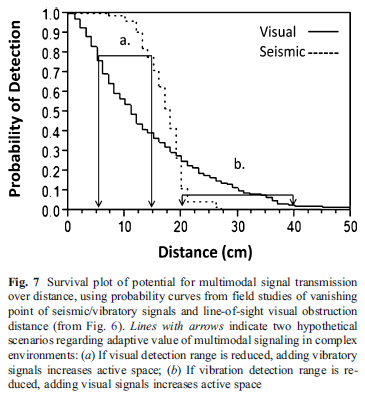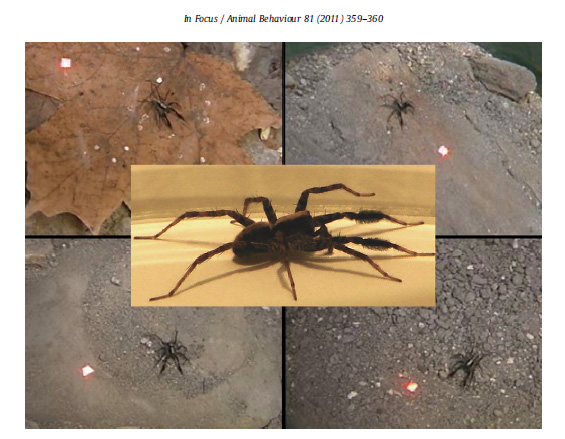
by Shira | Mar 14, 2013
Abstract Multimodal signals may compensate for environmental constraints on communication, as signals in different modalities vary in efficacy. We examined the influence of complex microhabitats on transmission of vibratory and visual signals of courting male...

by Shira | Dec 9, 2010
Communication in complex environments poses challenges of potential loss of intended messages, but some animals may compensate by using multimodal signalling. Courtship displays of male Schizocosa ocreata (Hentz) wolf spiders are multimodal, consisting of visual and...





Recent Comments